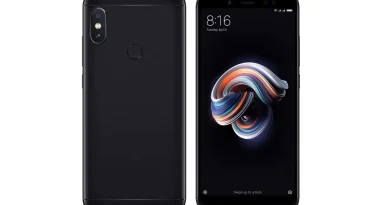The Best Smartphones You Can Buy Under Rs. 15,000 [September 2020 Edition]
[ad_1]
There’s never a dull moment in the sub-Rs. 15,000 price segment as we constantly have new and exciting smartphones launching. Realme and Xiaomi have been dominating this space for a while, and this month, we also have a brand new entry from Motorola, which has managed to earn its spot on our list.
The two big additions are the Realme 7 and the Motorola Moto G9. The Realme 7 replaces the Realme 6 at a marginally higher price, but offers improved features. Motorola’s new entrant turned out to be a pretty decent offering too. The rest of the list hasn’t changed much from before, except for the Samsung Galaxy M21, which now has a slightly higher starting price.
If you have a budget of Rs. 15,000 and are confused about what to buy, we have done the research for you. Here are the models that we found to be a cut above the rest, in no particular order.
Best phones under 15,000
| Phones under Rs. 15,000 | Gadgets 360 rating (out of 10) | Price in India (as recommended) |
|---|---|---|
| Realme 7 | 8 | Rs. 14,999 |
| Motorola Moto G9 | 8 | Rs. 11,499 |
| Redmi Note 9 | 8 | Rs. 11,999 |
| Realme 6i | 8 | Rs. 12,999 |
| Poco M2 Pro | 8 | Rs. 13,999 |
| Samsung Galaxy M21 | 7 | Rs. 14,499 |
| Realme Narzo 10 | 8 | Rs. 11,999 |
| Redmi Note 9 Pro | 8 | Rs. 13,999 |
Realme 7
The Realme 7 succeeds the Realme 6 and offers improved features such as a new SoC, a bigger battery, and a new primary rear camera. It also features a new design, so it looks nicer than the Realme 6. However, the side effect of having a bigger battery is increased thickness and weight. The Realme 7 is heavy and bulky, and can get a little fatiguing to use.
The rest of the features remain similar to the Realme 6. The Realme 7 is snappy to use, thanks to the speedy SoC and the 90Hz refresh rate of the display. Gaming performance is very good, the display has good brightness and battery life is excellent. 30W fast charging also helps charge the battery fairly quickly.
The main rear camera fares a bit better than the Realme 6 in daytime and nighttime photos, but the rest of the camera sensors perform similarly. The quality of videos could have been better, especially in low light. If you don’t already have a Realme 6, then it makes sense to go straight for the Realme 7 instead.
Motorola Moto G9
Motorola’s G-series has long been the backbone of its lineup and India is the first country to get the latest Moto G9. For what it offers, we feel Motorola has launched it at a fairly competitive price. One of the staple features continues to be the lean version of Android, which Motorola now calls MyUX. It’s mostly stock Android, with a few classic Moto customisations thrown in for good measure.
The Moto G9 is built well, but it feels a little big and bulky. It’s one of the few phones that still has a dedicated Google Assistant button, which is a nice touch. It’s also the first phone in India to feature the new Qualcomm Snapdragon 662 SoC, which does a decent job of keeping things running smoothly. Other than it taking slightly longer than usual to load heavy games, overall performance was good. Battery life was also more than satisfactory.
Camera quality was quite decent during the day. Landscapes and close-ups were generally detailed and had good colour saturation. Low-light photography is where the Moto G9 struggled quite a bit, although Night mode did help in a big way. Overall, the Motorola Moto G9 is a decent phone if you’re looking for a lean Android experience and don’t mind compromising a bit on processing power.
Redmi Note 9
The Redmi Note 9 is the entry-level offering in the Redmi Note 9 series from Xiaomi. It largely shares the same design as the Redmi Note 9 Pro and the Redmi Note 9 Pro Max. The Redmi Note 9 sports a 6.53-inch display with a hole-punch front camera in the top left corner. There is Corning Gorilla Glass 5 to protect the panel from scratches. The display has thick borders but these are acceptable for the price.
Xiaomi has picked the MediaTek Helio G85 SoC to power the Redmi Note 9. It is an octa-core processor with two Cortex-A75 cores and six Cortex-A55 cores. The Redmi Note 9 is available in three variants: 4GB of RAM with 64GB of storage, 4GB of RAM with 128GB of storage, and 6GB of RAM with 128GB of storage. The Redmi Note 9 houses a 5,020mAh battery and you get a 22.5W charger in the box.
The Redmi Note 9 has an IR emitter on the top which can be used to control appliances. At the back, it has a quad-camera setup consisting of a 48-megapixel primary camera, 8-megapixel ultra-wide-angle camera, 2-megapixel macro camera and 2-megapixel depth sensor. The Redmi Note 9 manages to take good photos in favourable light and the AI is quick to detect scenes. Low-light camera performance was average and the Night mode did not make a huge difference to quality.
Realme 6i
The Realme 6i can be best described as a toned-down version of the Realme 6. This smartphone however retains key hardware from the Realme 6 including the MediaTek Helio G90T SoC and 90Hz refresh rate, which isn’t common at this price point. The Realme 6i sports a 6.5-inch display with a hole-punch front camera at the top, and has a side-mounted fingerprint scanner.
The Realme 6i has a plastic body and there are two colour options. The MediaTek Helio G90T is capable of handling day-to-day tasks and gaming quite well. There are two variants of the Realme 6i offering 4GB and 6GB RAM, but the storage remains the same at 64GB. The smartphone packs a 4,300mAh battery and is capable of 30W fast charging but comes with a 20W charger in the box.
Realme has equipped the 6i with a quad-camera setup consisting of a 48-megapixel primary camera, an 8-megapixel ultra-wide-angle camera, a portrait camera, and a 2-megapixel depth sensor. Photos taken with the Realme 6i were good, and the camera reproduced good dynamic range. The wide-angle camera created slight barrel distortion at the edges of frames. Low-light camera performance isn’t as good, and the phone takes a while to capture a shot in Night mode.
Poco M2 Pro
The Poco M2 Pro is targeted at the budget segment. It has a premium design and packs in a big 6.67-inch display just like the Poco X2. It had the standard 60Hz refresh rate instead of the higher 120Hz refresh rate that the Poco X2 has.
Poco has used Corning Gorilla Glass 5 at the front and back, and has also opted for a P2i coating on the M2 Pro, which makes it splash-resistant to some extent. This smartphone is powered by the Qualcomm Snapdragon 720G SoC which we’ve also seen in competing models such as the Redmi Note 9 Pro. There are three variants of the Poco M2 Pro; 4GB of RAM with 64GB of storage, 6GB of RAM with 64GB of storage, and 6GB of RAM with 128GB of storage.
The Poco M2 Pro packs in a 5000mAh battery and was capable of very good battery life when we tested it. The company also provides a 33W charger that gets the phone to 95 percent in an hour. The Poco M2 Pro has a quad-camera setup with a 48-megapixel primary shooter. The phone captures good-looking photos in daylight, but its wide-angle camera captured weaker colours and details. In low light, the main and wide-angle cameras struggled with exposure and details. Night mode wasn’t too effective.
Samsung Galaxy M21
We were quite surprised by how similar the new Samsung Galaxy M21 was to the Galaxy M30s. In fact, other than a higher-resolution selfie camera on the new model, both phones are virtually identical. The best past is that Samsung has priced the Galaxy M21 lower than the Galaxy M30s, which makes it a better pick.
Some of the phone’s strong points include its crisp AMOLED display, low weight, very good battery life, and decent app performance. It runs Samsung’s One UI 2.0 interface on top of Android 10. It’s powered by the widely used Exynos 9611 SoC, which is not the most powerful especially when you have more powerful phones based on Qualcomm and MediaTek SoCs in the same segment. Still, for general use and a bit of light gaming, it gets the job done.
The triple rear cameras are decent during the day but they struggle a bit in low light. The 20-megapixel selfie camera is a notable improvement over that of the M30s though, as pictures taken during the day had good detail and low-light shots were usable too.
Realme Narzo 10
Realme recently launched its much-awaited Narzo series, and the Narzo 10 is a good offering for under Rs. 15,000. Realme is targeting the youth demographic here, focusing on style and gaming performance. The Narzo 10 has the MediaTek Helio G80, which handles games well, and overall app and multitasking performance is solid too. Battery life is also one of this phone’s strong suits.
The main area where the Narzo 10 could have done better is its cameras. Daylight performance was good with all the rear cameras and the single front one, but low-light performance left us wanting more. The camera app could have been a bit more intuitive too, especially for some of its core features. Realme UI looks fresh and interesting, but there’s still a lot of bloatware preinstalled.
There’s just one configuration, with 4GB of RAM and 128GB of storage. At just Rs. 11,999, the Narzo 10’s little issues can be forgiven as there’s no denying the immense value you get for your money.
Redmi Note 9 Pro
The Redmi Note 9 Pro has been a solid recommendation from us in this price segment, ever since it launched. It features a big 6.67-inch display. We found the phone to be bulky and heavy at 209g in weight but it is well designed.
It is powered by the Snapdragon 720G SoC and comes in two variants, one with 4GB of RAM and 64GB of storage, and the other with 6GB of RAM and 128GB of storage. The base variant is available for Rs. 13,999 which is a minor bump up from its launch price of Rs. 12,999 due to the GST hike.
Is Android One holding back Nokia smartphones in India? We discussed this on Orbital, our weekly technology podcast, which you can subscribe to via Apple Podcasts, Google Podcasts, or RSS, download the episode, or just hit the play button below.
[ad_2]
Source link




